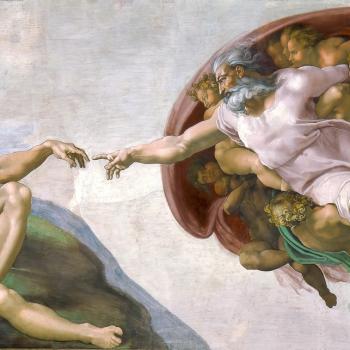Clues to bigger truths always come in such odd, unexpected attire and curious “boxes.” As a young child I remember hearing many “words to the wise” – aphorisms, pithy guides to navigating the world, which, if followed, offered, in theory at least, a “better” outcome. One such clue is the practice of “counting to 10,” when something or someone upsets you, before making your response. I can remember at times rushing through the numbers, a likely indication of the passion of the moment, predictably yielding a negligible change in my behavior. Yet, it seemed to be worth trying, and was for a time quite fashionable and trendy on the elementary school playground. Of course, being able to actually count to 10 was an important prerequisite. What then is the bigger truth behind the effect of counting to ten and what does it mean to know your numbers?
Why bother to do this?
What did counting to 10 accomplish in those playground skirmishes? Ostensibly, a calming of the breath, a softening of the edges, so that the response would become more rational, less passionate, less erratic, less extreme, less reactive. The space created by those 10 numbers allowed a pause in the flow of action, an invitation for Wisdom to enter and put the brakes on unconscious reactivity.
It is a question worth asking ourselves at this point: how much of each day do we spend in unconscious activity when we are physically doing something, for example driving, while our thoughts are miles away? We are brought back to “reality” when we realize we have arrived and don’t remember how we got there. Further, we recognize our unconsciousness when we react instantaneously to something we have just heard, read, or experienced. Often, we don’t even know why we feel our reaction so deeply, and we “come out of the corner swinging.”
Knowing Your Numbers – A Compassionate Approach
Some religious communities have worked with deep compassion on this subject – compassion for the person reacting, for their unconsciousness, and for their wish to become more conscious, that is, to be more aware in the living of their lives. The Quakers have written a guidebook, “The Sense of the Meeting,” which addresses among many other things the way they seek to engage with each other in community meetings. They teach the simple holding of what you have heard in the silence of your heart for a few minutes before responding. These moments of silence are indeed “golden.” They allow one to soften, to recognize any reactivity one is experiencing, understand it, release it, and then rest in the creative space that is God/Source, making it possible then to hear the Wisdom and now “informed words” of one’s own thoughts. After a time, one makes one’s response. With practice and surrender, one is able to meet “the space of silence, where Wisdom resides” more easily. This is learning to count to 10.
To understand this process of creating “space within time,” we need only look to St. Ignatius and his contemplative practice called the Consciousness Examen. One is encouraged hourly or at the end of each day to look at the activities of the day and creating two categories, discern which of our activities (thoughts, words, actions) brought us closer to God (to consciousness/awareness) and which drove us further away. After a time, in looking at the results of this practice one can quickly detect patterns of behavior and ultimately their source, which was initially unconscious, but has now been brought into conscious awareness.
Once having identified those reactions that had been unconscious, a curious thing happens, for which I have no explanation. It’s what we labeled in our St. Ignatius group, the “St. Ignatian pause” (the SIP). We all experienced it and referred to it as the SIP. It is in fact the experience of a stretching of time which creates “space” for a more considered response to the reality that is presenting itself to us. Alternatives spontaneously present themselves, are evaluated and the best response is discerned. Most importantly in this process, one realizes that one has alternatives, each of which will produce a different effect. The basis of unconscious reactivity is the notion that there is only one response, and often we’re sure ours (though we don’t know why) is the correct one.
This brings us to the question of “what is this timeless space” and how is it related to creation, perhaps even, to creation of our own reality? We are often told that we create our own reality. What does that mean? Do we?
Co-Creating
We know from the mystics of every religious tradition that the space between breaths – that infinitesimal moment between the “in breath” and the “out breath” is the space of all creation – the fecund void, from which everything arises, and into which everything dissolves. It is the silence that allows anything, everything to be. It is the space within which our reactions to the world we are experiencing do actually create the future world we experience and its consequences. We are human creatures with the gift of free will. We are able therefore to freely choose what we create. As our reactions and our informed actions gradually become more aware, we have the possibility of raising the consciousness of ourselves, Planet Earth, and all of creation, as a whole. It is our mission, if we choose to accept it.
God/Source breathes life into us, breathes Spirit into us and thereby, we “become.” The question then becomes what is each of us breathing life into? How adept we become at “counting to 10,” at tapping into that timeless space of silence, may well answer that question.













